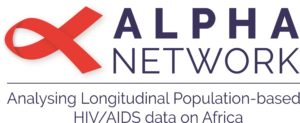December 2014, Entebbe, Uganda
Background
The advent of HIV treatment creates new opportunities and challenges for measuring health and welfare children and adolescents who live with HIV, either HIV-infected themselves or as the children of HIV-infected parents. Questions include: the size of the treatment gap for HIV-infected children; mortality patterns among children who do not receive optimal treatment; and the extent to which treatment (of parents and/or children) mitigates adverse consequences of HIV infection. Population-based and antenatal HIV surveillance, have contributed to our knowledge of HIV and treatment in adults, but HIV status and related health and welfare consequences are not as well measured in children and adolescents. Most population-based HIV surveillance excludes children between the age of 5 and 15 years, whereas data on children under 5 years is generally collected in birth cohort studies where follow-up of selected children often stops after one or two years. This dearth of empirical data on the children who are growing up in the third decade of the HIV epidemic in Africa has implications for monitoring progress on health and welfare indicators. In this workshop, the network investigated how far data held by ALPHA member studies could go to addressing this knowledge gap.
Workshop and related activities
The 12-month involvement of LSHTM started 1st November 2014 with preparations for the one-week training and analysis workshop at the MRC/UVRI site, Entebbe, Uganda in December 2014. The workshop was organised so scientists from participating sites could under the guidance of facilitators including Marston, Slaymaker, Reniers and Zaba. As with previous workshops, participants brought relevant data from their own sites, conforming to a common template, and generates site-specific findings, following a demonstration model analysis developed by a site that is most advanced in this area of work.
The workshop covered the following themes and issues:
Theme 1) The demographic and social context of children and adolescents in HIV affected populations
1.1 Age patterns of inter-household child mobility and proportions of children living apart from parents and siblings
1.2 Effect of parental i) HIV infection, ii) separation; iii) mortality on children’s inter-household mobility.
1.3 Effect of mobility on child welfare as measured by household composition, household assets, parental co-residence, stability of fostering arrangements, age of care provider and child’s school attendance.
1.4 Changes in child care, fostering and orphanhood since availability of anti-retroviral treatment for adults.
Theme 2) Improving measurement of HIV prevalence, incidence and treatment of children in African HIV cohorts
2.1 Assess existing data collection approaches for children and adolescents in HIV cohorts, including demographic surveillance, linkage of clinic and population data (including PMTCT), establishment of nested birth cohorts, and monitoring cross-household family links.
2.2 For sites with community-based testing of under 15s: measure trends in HIV prevalence in children and adolescents, by participation in treatment cascade and HIV prevalence in pregnant women in year of birth
2.3 Assess unmet need for paediatric treatment in the community
2.4 Develop strategies to monitor health impacts in exposed uninfected children.
Workshop follow-up
After the workshop, ALPHA study sites were helped writing their findings as research papers, and would take the lead in publishing research papers using pooled data sets put together from the data contributed by the study sites.
Through sharing experiences of paediatric HIV work in some of the more advanced study sites, some of the remaining ALPHA sites may be able to start measuring HIV and treatment status in children directly.

